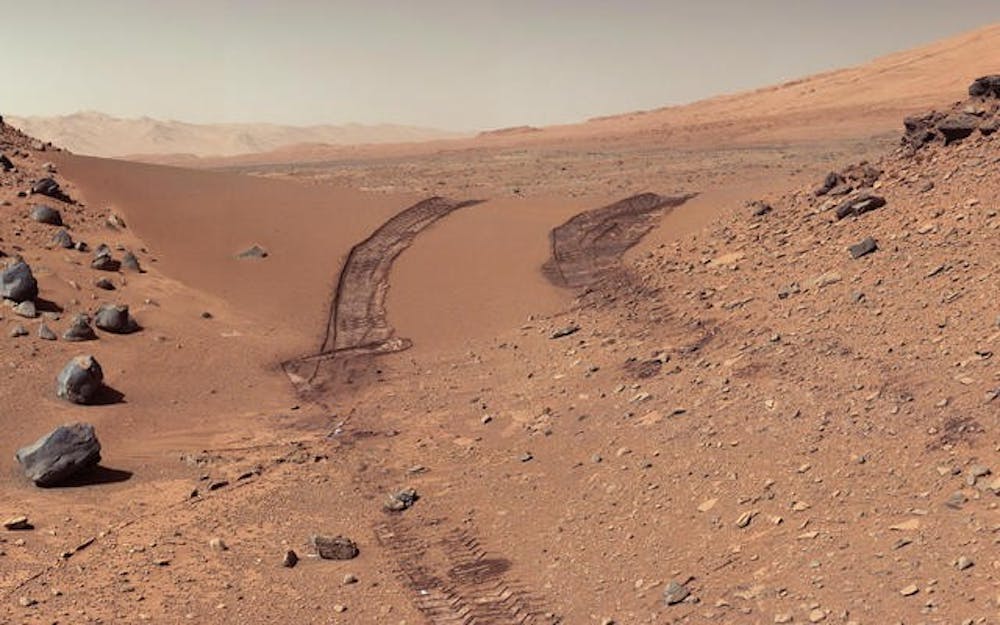
It feels like this horse has long since been beaten to death — when are we going to finally land humans on Mars? It’s been a lifetime since the idea was first entertained, but so far the closest we’ve gotten is Matt Damon celebrating potatoes in The Martian. As seemingly drawn out as the process of putting humans on Mars has been, we’re constantly taking steps forward. Undergraduates at Villanova University have experimented with growing common plants in Martian-like soil, producing promising results.
In an undergraduate astrobiology class at Villanova University, a new lab course looks at how plants would fair in Martian conditions. Edward Guinan and Scott Engle, professors in the department of Astrophysics and Planetary Science, developed the program called Red Thumbs Mars Garden Project. They were inspired by Veggie, a National Aeronautics and Space Administration (NASA) program that has developed a system of plant growth for space travel.
Although Mars is the closest Earth-like planet, its soil is very different. Martian soil contains about two times more iron oxide than Earth, giving the planet its characteristic rust color. It also has an abundance of perchlorate, which is very detrimental to humans, causing thyroid problems and even death. There is also less organic material in the soil. Due to its distance from the sun, the Martian atmosphere receives less than half the sunlight that Earth does, but since Mars does not have an ozone layer, the surface of Mars receives much more ultraviolet radiation.
To simulate these conditions, the class used a Martian soil simulant developed by NASA and the Jet Propulsion Laboratory. It contained iron-rich basalt and added supplements, matching true Martian soil to about 90 percent. The soil did not contain the perchlorates. Mars explorers could free the soil of perchlorates by washing it, since perchlorates dissolve in water or use bacteria that eat perchlorate and release oxygen as a by-product. The greenhouse that the plants were grown in was set to match the light conditions on Mars but maintained an Earth-like atmosphere. Since Mars has a very thin and cold atmosphere, plants grown on the planet would need to be in a greenhouse. This isn’t inherently a bad thing — Guinan said in an interview with the American Geophysical Union that the greenhouse plants could be part of the atmospheric recycling process for the Martian colony.
One of the greatest changes to the soil was the addition of water — lots of water. Martian soil is very dry, so students had to water their plants every day. On Mars, the greenhouse would need to stay at 50 to 60 percent humidity to allow the plants to grow.
The other change was adding material to make the soil less dense. Plants such as russet potatoes were crushed in the soil, so students added cardboard and coffee grounds to aerate the soil and allow roots and vegetables to grow. Guinan stated the cardboard is a good solution since it would probably be used to package materials sent to Mars, so the colonists would have easy access to it.
After perfecting the soil and growing conditions, students found that basil, kale, onions, garlic, lettuce, sweet potatoes and mint could grow easily in Martian soil. Students even grew hops, an ingredient in beer, joking about cornering the market on “Martian beer.”
Although the plants tasted the same as Earth-grown ones, there is still some concern about how healthy they are for humans. Because the soil is so iron-rich, the plants may have taken up an abundance of iron, which can cause indigestion and food poisoning in humans.
Guinan says he plans on running this experiment with his students again. He wants to focus on plants that astronauts are more likely to choose, since he felt his students chose vegetables that they like to eat instead of for nutritional value. Already, barley and snow peas have been added to the mix of crops. He also has added worms to the soil, which have shown to aid plant growth.
Although landing people on Mars doesn’t have the same fervor as landing people on the Moon, it’s nice to know that we can grow a salad on Mars. It’s also inspiring to see that undergraduates are providing such important research to Mars colonization. So, to all my professors that might be reading this — can we have our own Red Thumbs Mars Garden Project at Hopkins?





